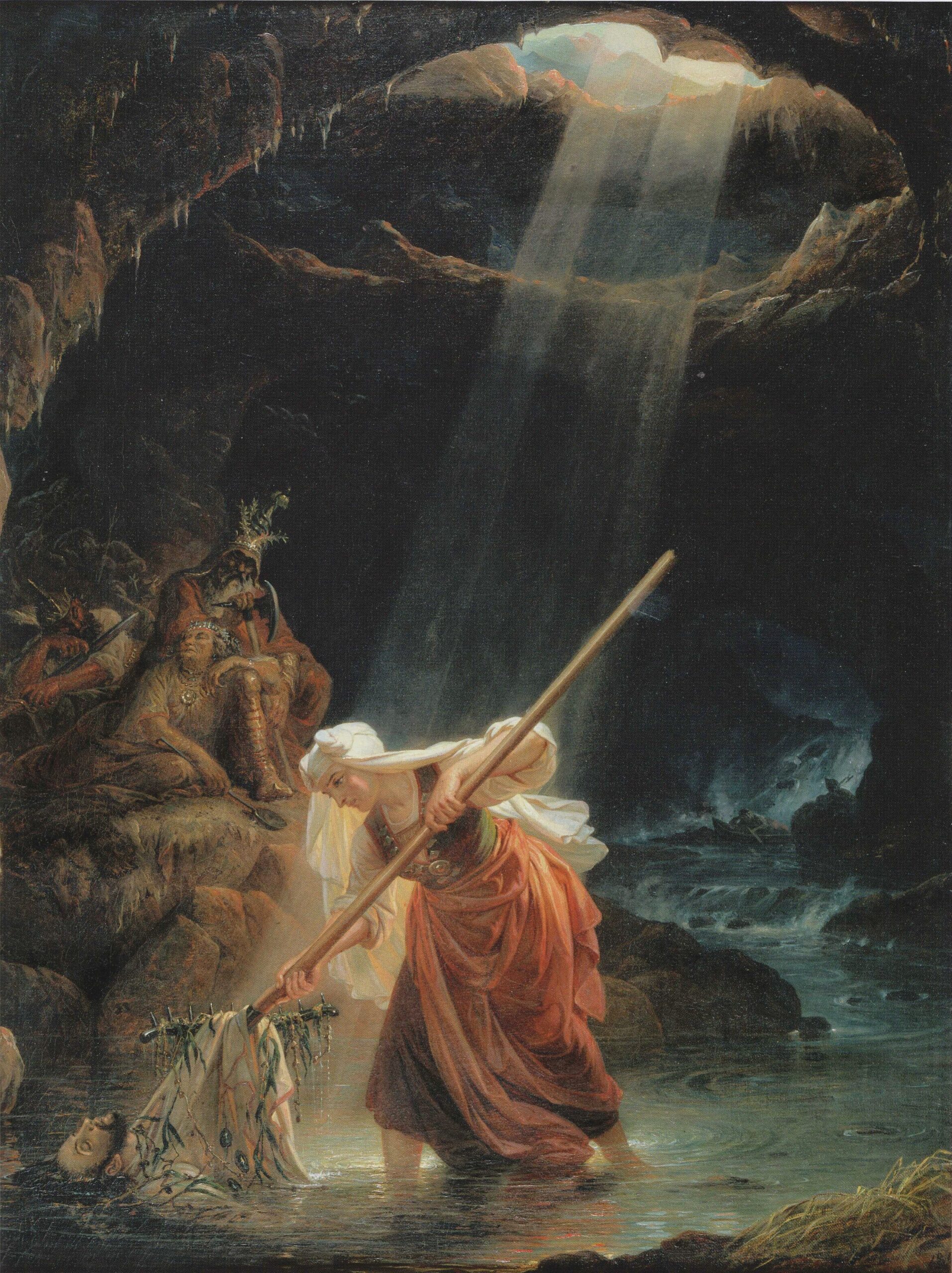
Lemminkäinen’s Mother at Tuonela, Robert Wilhelm Ekman, credit Wikimedia Commons
Endnotes, December 2023
In this edition: Collectors’ corner, vintage Elgar and Sibelius; Parry, Symphonic Variations, reviewed by Stuart Millson
Occasionally, it pays to walk away from the current CD catalogue and download ‘playlists’ and delve into the still-living and listened-to treasury of gramophone records. There is a true acontact with the spiralling grooves spinning at 33 1/3 rpm on the turntable; a real sense of pride in a collection as one holds the record cover ~ often a tangible, physical reminder of a particular time in life; a favourite composer, an obsession with a particular piece.
Those who think only of CDs, or whose music collection is locked inside an electronic bank of files – think again. A trip to a specialist record shop, or trawl through internet lists, may put you in touch with an almost lost world of orchestras and conductors from times past; captured with recording techniques which can sometimes prove worthy rivals to contemporary labels. This month, we look at two such examples: medium-play microgroove records (i.e. c. 12 minutes of music per side) from the 1950s: Elgar’s Introduction and Allegro and Serenade for Strings played by the New Symphony Orchestra under Anthony Collins; and Sibelius’s The Swan of Tuonela, coupled with a thrilling recording of Lemminkainen’s Return, Op. 22, No. 4, from Thomas Jensen and the Danish State Radio Symphony Orchestra.
The conductor Anthony Collins has faded from view today, unjustly, as he recorded for Decca the first British Sibelius symphony cycle ~ a set which was transferred to the stereophonic Decca Eclipse label in the 1970s, joining a re-engineered mono-sound Vaughan Williams cycle from Boult and the LPO, and Holst’s The Planets in a 1958 rendition by Sargent and the LSO. For his Elgar music for strings, Collins (as in Sibelius) takes a direct, no-frills approach to those two curtain-raising staples of the English repertoire ~ generating in the (1905) Introduction and Allegro a tinge of that sea-breeze freshness which so inspired the composer on his musically fruitful holiday to Cardiganshire.
Unlike many modern interpretations, Collins (in straightforward Decca sound quality) exerts no pushing or pulling of the music; no unduly over-sensitive touches, no over-elaboration. Some, of course, might argue that alongside classic recordings (Barbirolli and Britten, or more recently, Edward Gardner and the BBC SO), the Collins approach lacks emotion. But by ‘playing a straight bat’, the (old) New Symphony Orchestra, allows listeners to savour a simplicity of style and faithfulness to the score. Yet that is not to say that the New Symphony strings lack vitality, for in the impetuous concerto grosso passages (so associated with Ken Russell’s 1960s’ Elgar film) listeners will find themselves lifted to the high trackways of the Malverns, the surging waters on the River Severn, the skyscapes of the English-Welsh border where Elgar roamed and (in his words) ‘dreamed of something very great’.
The Danish State Radio Symphony Orchestra of 65-75 years ago was clearly a force to be reckoned with; Decca’s sound-technicians of the time capturing a woodwind sound of sparkling intricacy ~ a sunlit Nordic tide bringing the Finnish folk-hero, Lemminkainen, to the country of his childhood. Part-Don Juan, part-Siegfried, the legendary warrior clearly inspired an outburst of national rejoicing in Sibelius’s writing, as an inextinguishable orchestral surge builds and recharges, before releasing the tension in a finale of affirmation and victory.
Any listener will surely be gripped by the cutting call-to-arms delivered by the very forward brass sound of the Danish orchestra ~ a startling blast, in a somewhat unnatural ambience, reminiscent of trumpets as famously captured in Janacek performances on the Czech Supraphon label.
Sir Hubert Parry’s Symphonic Variations were premiered two years before Elgar’s rather longer-in-span and more famous ‘Enigma’ Variations, yet some passages match (or rival) Elgar for heroic melancholy. And yet in Parry, the autumnal elegies of Brahms’s slow movements are never far away: the English master taking the clarinet and horn sound of the great Johannes, transposing it from Hamburg or the Rhineland to the willowy walks of Sussex.
Listen, though, for a change of mood just over halfway through the work; a furrowing of the brow by Parry, as urgent, stormy strings and organ-like blocks of sound from French horns create a terrible grandeur ~ like glimpses of winter sunshine through a tempest. Playful, bittersweet woodwind usher in delight and nostalgia, so we are hearing far more than stately, Teutonic gestures ~ the woodwind managing a final re-appearance ~ giving the work an optimistic ending.
The variations run as a continuous whole, Parry emerging as a true master of our English musical renascence ~ the foundation-builder of what was to come in the age of Elgar and Vaughan Williams.
Stuart Millson is the Classical Music Editor of The Quarterly Review
Record and CD details:
Elgar, Introduction and Allegro, Serenade for Strings. New Symphony Orchestra of London, Anthony Collins. LW 5047.
Sibelius, The Swan of Tuonela, Lemminkäinen’s Return. Danish State Radio Symphony Orchestra, Thomas Jensen, conductor. LW 5105.
Parry, Symphonic Variations. London Philharmonic Orchestra, Mathias Bamert. Chandos 6610.










